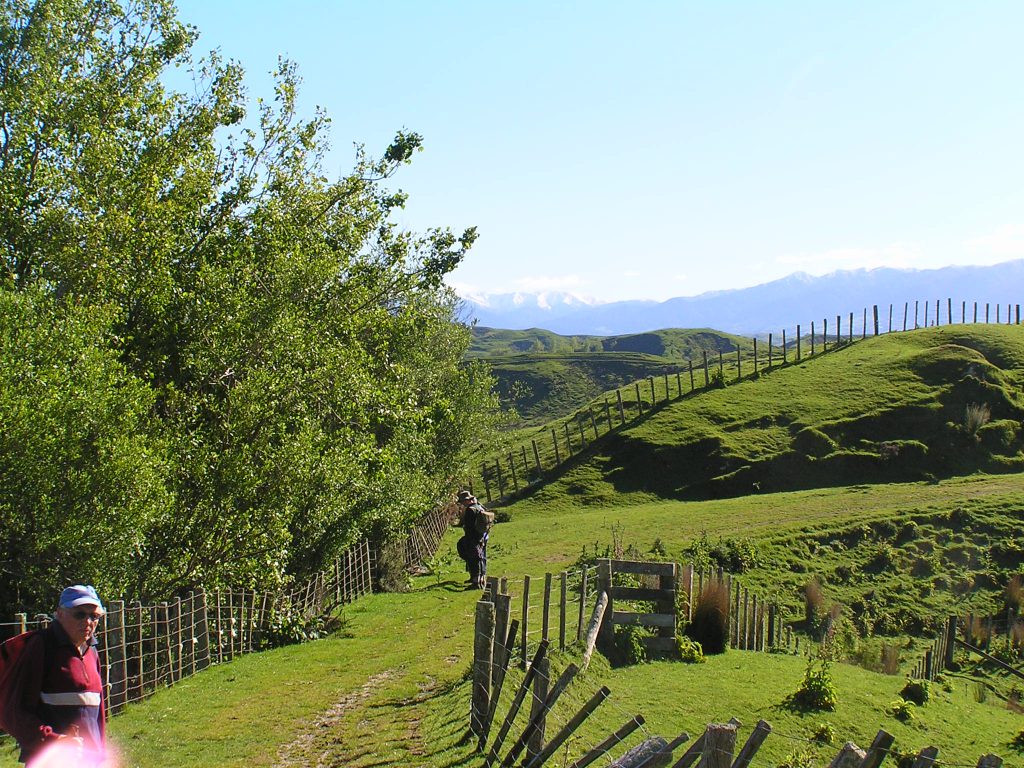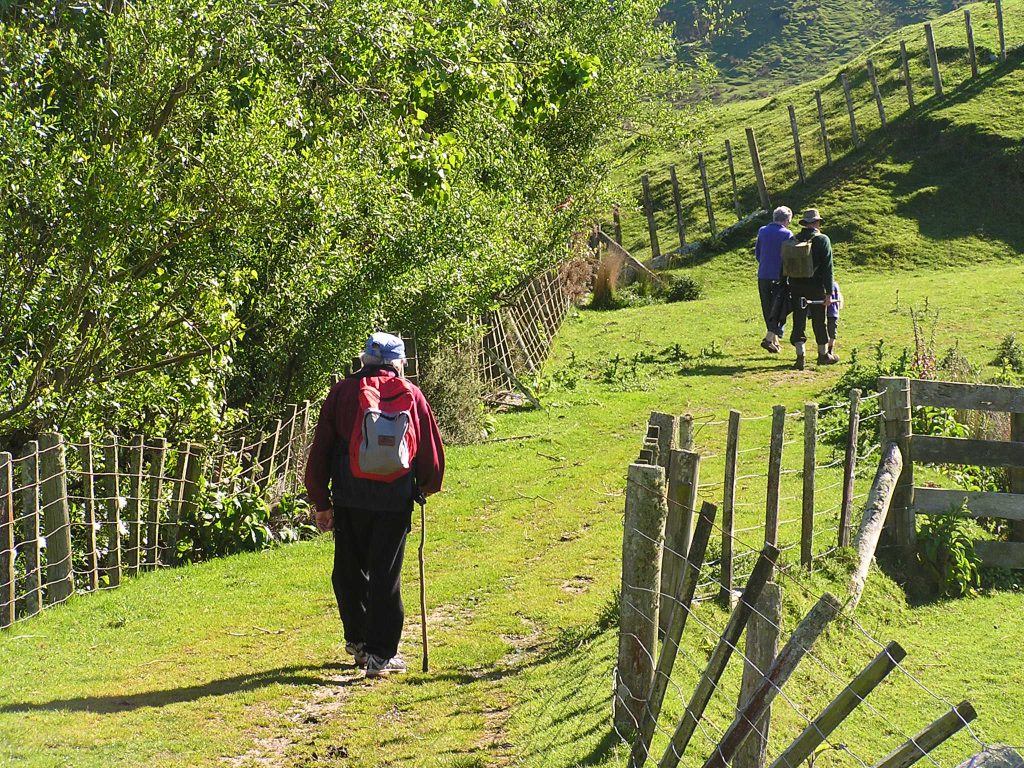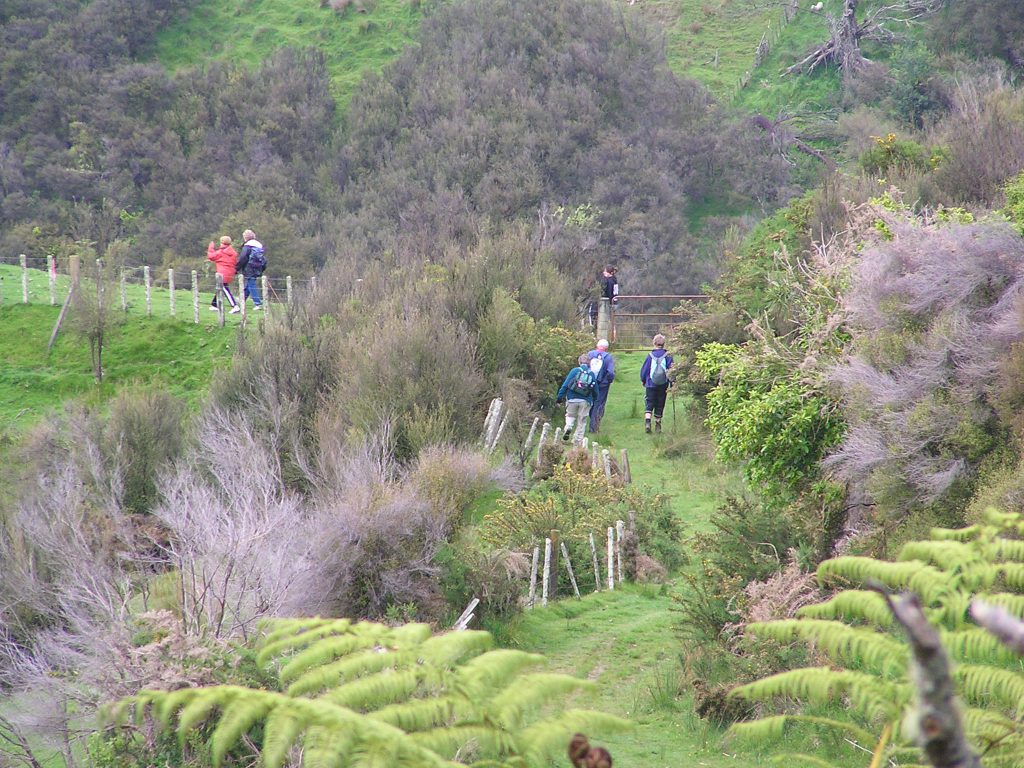Branch Road Walkway: In the footsteps of early Māori
Branch Road follows the ancient Māori route, the Ahimaramara Track, from Hawke’s Bay into the Rangitikei Valley.
When Captain James Cook sailed down the coast past Taranaki (formerly known as Mt Egmont) in 1769, he recorded seeing smoke from fires around the base of the mountain, so he assumed that there were people living there. As he sailed further down past Kāpiti (which he called Entry Island), he saw no smoke. Nor did he see smoke in the country behind it, Rangitikei/Manawatū.

The evidence in the land of middens, ancient umu, house sites and fortifications shows that there were considerable numbers of people living in parts of the land from Ahuriri (Napier) across to Patea and Whanganui, but to the south of the Rangitikei River there are only
occasional signs of habitation.
The people of the east frequently crossed the ranges using routes beginning at places like Whakarara (near Onga Onga) and Tahoraiti (near Dannevirke).
In the wet and cold November of 1848 William Colenso, the Anglican missionary, left his station near Clive and with his two Māori guides climbed up and over Maharahara in bad weather and down the ridge to the site of a village near the junction of the river called Pouhangina (the original spelling) and Makiekei River (Coal Creek). There was no sign of recent habitation there, so they pushed on to Kiekietangoio, at the present site of the village of Pohangina.

Here at Kiekietangoio there were seven people, including adults and children, relatives of one of the guides, J Hobbs Tuarere. The travellers stayed for three days and then continued their journey. In heavy rain they struggled up Ahimaramara, which we now call the Branch Road
Walkway, crossed over at the top and down into the Oroua Valley, then on into the Rangitikei.
There they saw a man in a canoe who told them that his people had gone down to the coast. Colenso and his party turned upstream, crossed the Mokai Patea and in a few days reached Taupō Moana (Lake Taupō). After three weeks there they returned home following the trail through Rangitaiki and Haroto to Ahuriri.
The early European settlers used the ancient trail, Ahimaramara, when they first began to explore the Valley, walking, and carrying their goods on pack horses. Before permanent settlement came, wild cattle roamed the hills and farmers often hunted them on horseback,
shot and skinned some and sold the meat and skins in Ashhurst. Later those living on the edge of the bush captured wild cattle and sold them in the yards at Pohangina Village.

The European settlers widened the track enough to use drays and sledges, and formed their road into the Valley on the original Ahimaramara Track, linking Kiwitea (which was then located 3km closer to the Pohangina than it is today) to the Pohangina township. The roadman from Pohangina was kept busy clearing the slips, to which this part of the country has long been prone.
The use increased each year until in the 1920s the Finnis Bridle Track, originally considered too difficult to develop, was widened and levelled with modern machinery, and was now much more stable than Branch Road. Finnis Road provided an alternative route, supplanting
Branch Road as the main route into Pohangina. Branch Road was eventually closed to vehicular traffic in the 1960s following a series of large slips. So, Ahimaramara, the original access into the Valley, was closed.
Subsequently many local volunteers, and some others from further afield, have worked, and continue to do so, to maintain the route as the Walkway we enjoy today. It is a pleasant six-kilometre road-grade walk connecting Pohangina Road with Ridge Road. Ample parking is
provided at Pohangina Recreation Reserve (previously known as Pohangina Domain) on Pohangina Road. From here the initial 250 metres along Kuku Road brings walkers to where the Walkway branches off, at the first of many well-built numbered stiles. The route is clearly marked through bush, forestry, and farmland – with excellent views along the tops to the Ruahine Range and Maharahara, Ruapehu, Kāpiti and beyond. There is also a small off-road parking area at the upper (Ridge Road) end, not far from Coulter’s Line which drops away
down into the Oroua Valley and Kiwitea.

In places the Walkway passes through private land and forests and there are some parts where the track is narrow with steep drop-outs.
Continued access is dependent on walkers keeping to the marked route, recognising that they are responsible for their own safety and that of their party. Branch Road Walkway is open for public use year-round, except in August and September when it is closed for lambing. Dogs, cycles, firearms, or fires are not allowed anywhere on the Walkway at any time of year.
This article has been written by Mary Nettle, and draws extensively on material originally researched by fellow Valley resident the late Jim Lundy. Walkers will find a seat, placed by County Fayre in memory of Jim, under the beech trees nearly halfway up the Walkway.